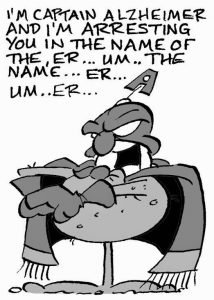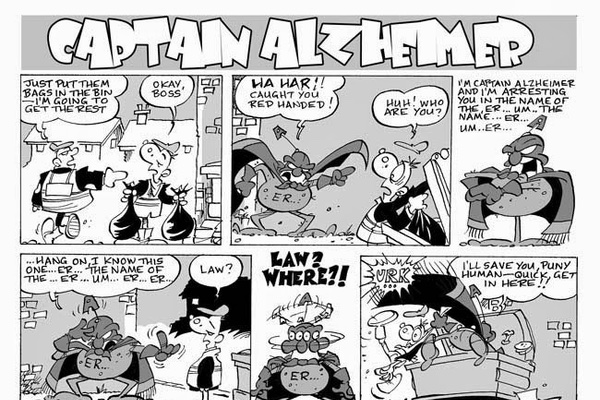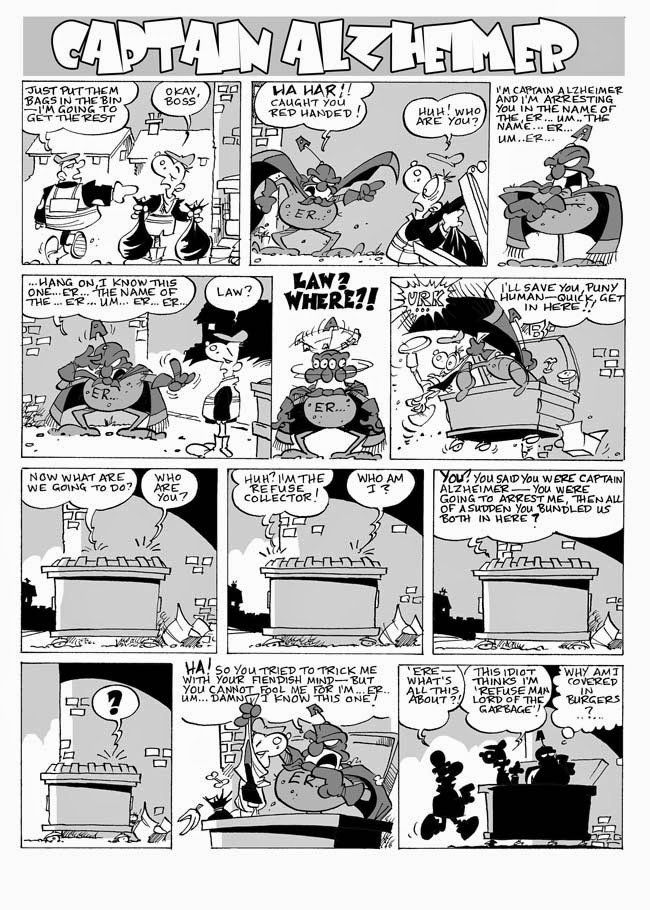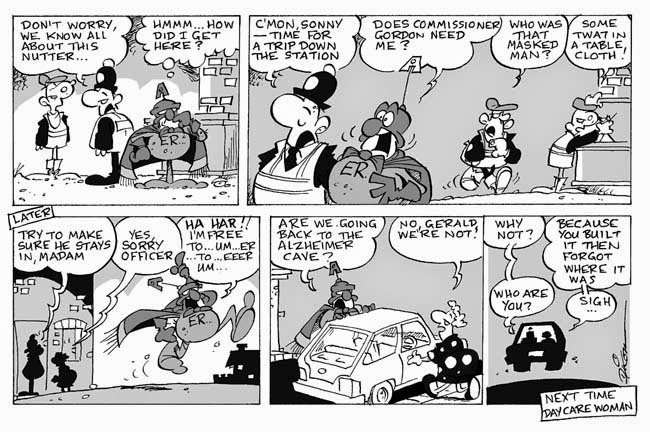By Karl Dixon
Read Part 1, Part 2, and Part 3
 In this tutorial, the fourth in my series of creating a comic character, I will be talking about how I script a comic page. I will not address how to make it funny, poignant, dark, sinister, light-hearted or any other emotions of the modern comic book or graphic novel. Instead, at the end of this post, I’m including a page-and-a-half story, the culmination of these four tutorials.
In this tutorial, the fourth in my series of creating a comic character, I will be talking about how I script a comic page. I will not address how to make it funny, poignant, dark, sinister, light-hearted or any other emotions of the modern comic book or graphic novel. Instead, at the end of this post, I’m including a page-and-a-half story, the culmination of these four tutorials.
The comic page is a more compact version of the comic strip, and follows these few simple rules: It must have a beginning, middle, and an end; an introduction to the character; must set the scene; run the story; end with a summarized point of the whole story
It must have a beginning, middle, and an end : Like all stories, comics must have a beginning, a middle, and an end. I know this sounds logical, and when you are producing a graphic novel that sprawls over hundreds of pages, that may sound like good practice, but when you are producing only a two page story for a comic, or a collection of short gag pages, or even worse a one pager, this can be a difficult rule to follow. But without it, your story loses its structure, and anything without structure will crumble and collapse.
Introducing the character: Unless you have an instantly recognizable character, like Superman, Mickey Mouse or Bart Simpson, you will have to introduce your character within the first few panels, and do so in such a way that your character’s personality, or character trait, is established from the start. This is especially important when introducing a new idea to a largely sceptical audience.
Setting the Scene: This is the only chance you’ll have to lay the solid foundations for your story’s desired punchline. In the page below, this is illustrated by the refuse collector trying to complete a simple task that Captain Alzheimer’s problems and issues will turn into a mountain, one even Mohammed would think twice about. So in this case, the simple task not only sets the scene, but prepares for the punchline.
In the page below, this is illustrated by the refuse collector trying to complete a simple task that Captain Alzheimer’s problems and issues will turn into a mountain, one even Mohammed would think twice about. So in this case, the simple task not only sets the scene, but prepares for the punchline.
Run the Story: Once you have the character introduced and the scene set, you can then add in as many sight gags, comments, and situations involving that theme as possible—depending, of course on space. Once again, the page and a half below illustrates the growing confusion and forgetful nature of the strip’s main character.
End with a summarized point: When you think you’ve said all you wanted to, or have exhausted the story’s themes and gags, you will need to fold up the tale.
Once again, in the tale below, I used the introduction of another character to remove the strip’s star from the main scene and inevitable dead end. This enables the reader to clearly follow the main thrust of the tale to the story’s end game; in this case his release into his long suffering wife’s custody. The story then ends with a reinforcement of the main character’s personality trait as well as a hint as to what more similarly-themed strips would be like.
I know the subject matter may not be to every one’s taste, but like I said in the first post, this character was created for a specific market. A market that relies on an off-color humor beloved by so many. Anyway, by way of a thank you for trawling through these tutorials, I have, as promised, posted the finished page and a half of the completed Captain Alzheimer strip.
Enjoy and Bonn Appetite!




I laughed out loud about where he’s covered in burgers!!! LOL Yes, the subject is quite sad, actually, because none of us know if this might affect US… but this IS funny, in such a light-hearted way. The drawing is terrific!